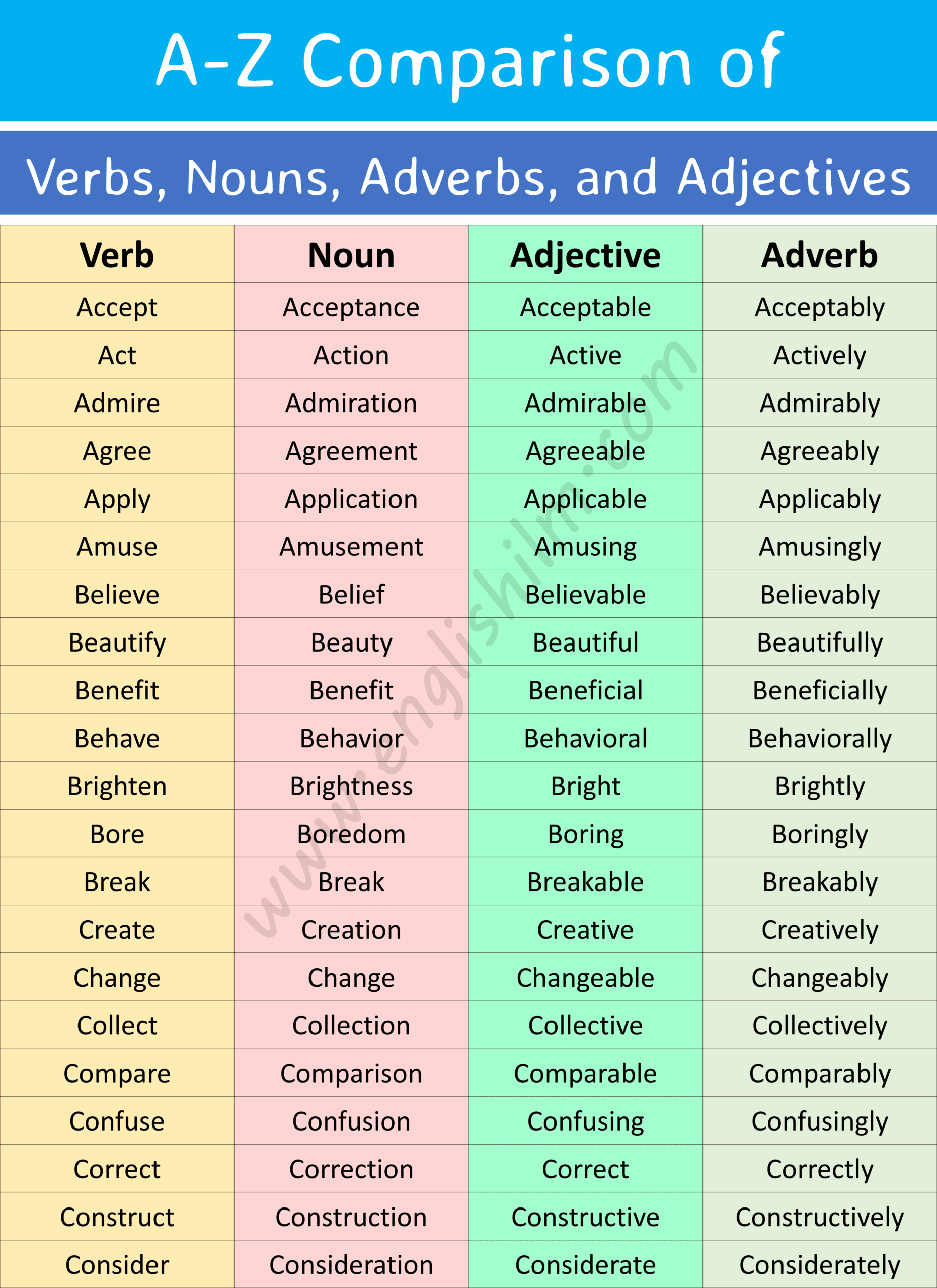Understanding the basic building blocks of language is essential for effective communication. Nouns, verbs, and adjectives play crucial roles in forming sentences and conveying meaning. By learning examples of how these parts of speech work together, you can improve your writing and speaking skills.
In this article, we will explore various examples of nouns, verbs, and adjectives in action. By breaking down sentences into their component parts, you can see how these words interact to create meaning and convey information.
Examples of Noun Verb Adjective
1. Noun: Car | Verb: Drive | Adjective: Fast
Example Sentence: She drove her fast car down the highway.
2. Noun: Dog | Verb: Bark | Adjective: Loud
Example Sentence: The loud dog barked incessantly at the mailman.
3. Noun: Book | Verb: Read | Adjective: Interesting
Example Sentence: She read an interesting book over the weekend.
4. Noun: Child | Verb: Play | Adjective: Happy
Example Sentence: The happy child played in the park with her friends.
5. Noun: Mountain | Verb: Climb | Adjective: Tall
Example Sentence: They decided to climb the tall mountain despite the challenging terrain.
By studying these examples, you can see how nouns, verbs, and adjectives work together to form complete and coherent sentences. Nouns provide the subject or object of a sentence, verbs indicate the action or state of being, and adjectives describe or modify nouns.
Using a mix of nouns, verbs, and adjectives in your writing can make your sentences more engaging and descriptive. Experiment with different combinations to create vivid imagery and convey your ideas effectively.
Overall, understanding noun-verb-adjective relationships is essential for mastering the English language. By practicing with various examples and incorporating them into your writing, you can enhance your communication skills and become a more proficient writer.
